I only ever have one tin / bag of matcha open at a time, to ensure that I am sipping through the matcha I have while it is at it’s best and to enable me to focus everything each one has to offer, collating detailed notes and experimenting with matcha to water ratio, water temperature and preparation to ensure that I know everything there is to know (be it good or bad) about each one.
So over the last few weeks, I have been sipping solely on Nio Tea’s – Premium Matcha Chiran, A JAS certified organic matcha grown in the picturesque town of Chiran, Japan. This tea is the result of years of careful cultivation and processing by the expert hands of Mr. Nuruki, who owns a small farm in the southern region of Japan. With his expertise, Mr. Nuruki cultivates various tea plant varieties and skilfully crafts them into exquisite tea blends.
The matcha is produced using two tencha of different cultivars, Okumidori, which is often used to add smoothness to the flavour profile of blended matcha and can help to round out any bitterness you may experience, & Asatsuyu, which is known for being a sweeter cultivar, whose name means “clear green” and it is known as a natural Gyokuro because the flavour is naturally sweet without shading.
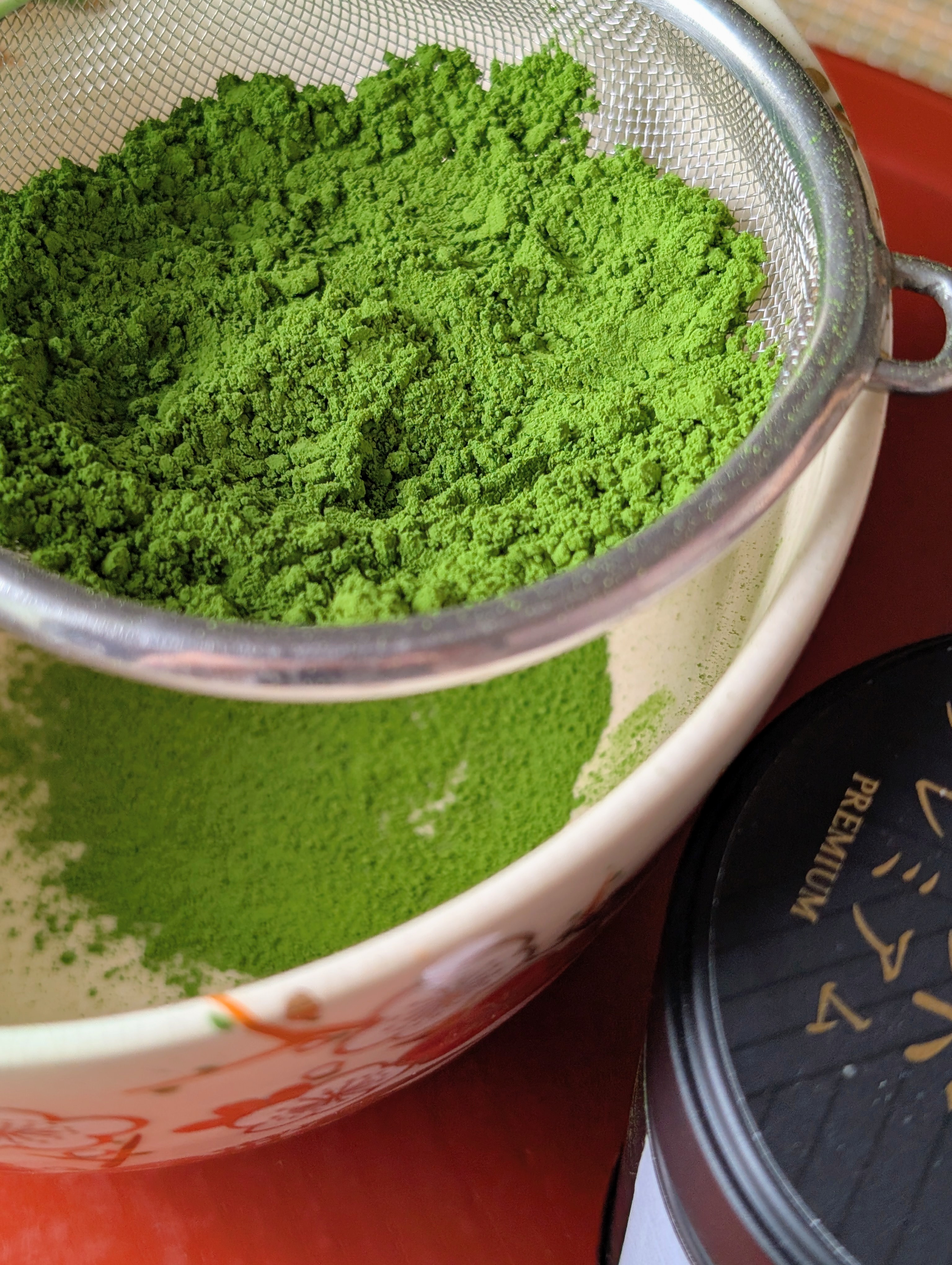
Here’s what I’ve learnt about this matcha over the last few weeks:
The dry powder is a deep vivid shade of green with an ever so slight warm undertone, texturally it is soft and fluffy when scooping from the tin. Because of that, it is easy to sift into a super fine powder in the chawan. The dry aroma has a starchy note of freshly made pasta, melted softly salted butter. It is of course prominently vegetal, but there are also notes of fruit and nut dark chocolate, greek yogurt, toasted chestnut flavoured marshmallows, dried goji berries, & chrysanthemum.
With the addition of water, the aroma did change a little, but retained a lot of the notes that were present prior. The most notable change was the amplification of the grassy vegetal notes and that greek yogurt acidic sharpness. This matcha froths easily into a thick and creamy froth that, depending on your matcha ratio to water, will either be a deep dark rich green or a slightly creamier pale green. I like my matcha within the perfect middle ground between them so I often find I get a darker froth with a beautiful creamy light green swirl throughout it.
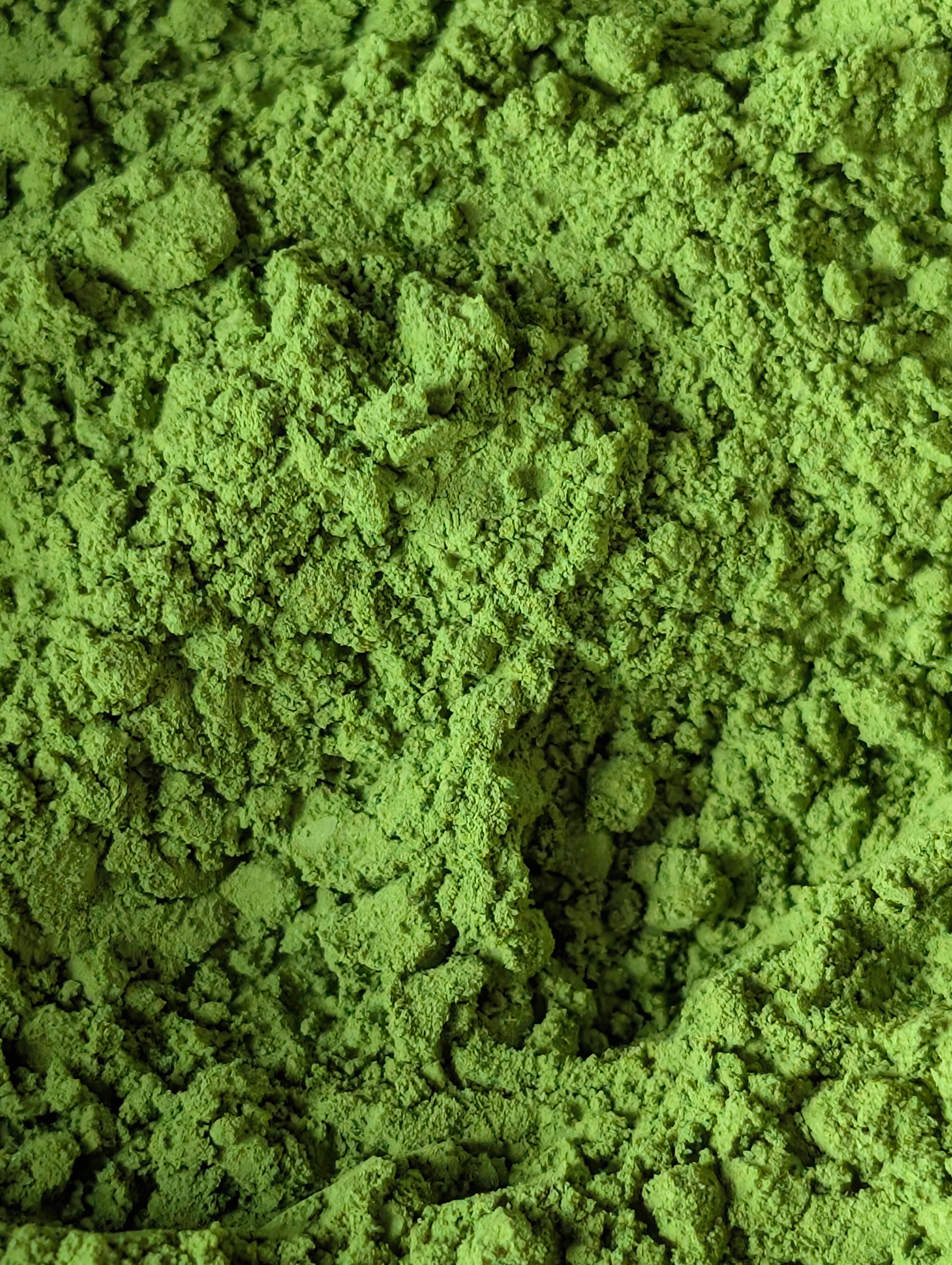
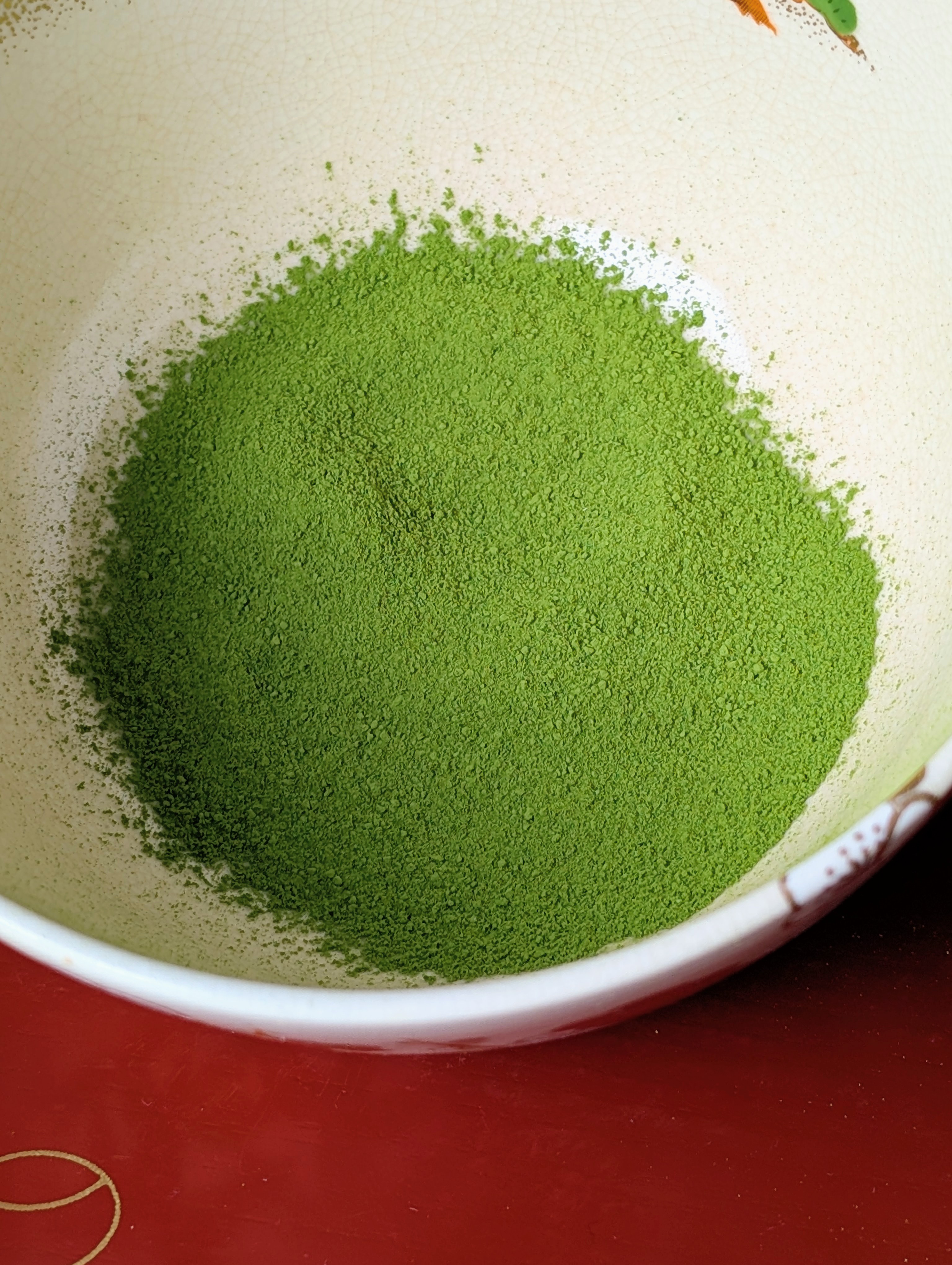
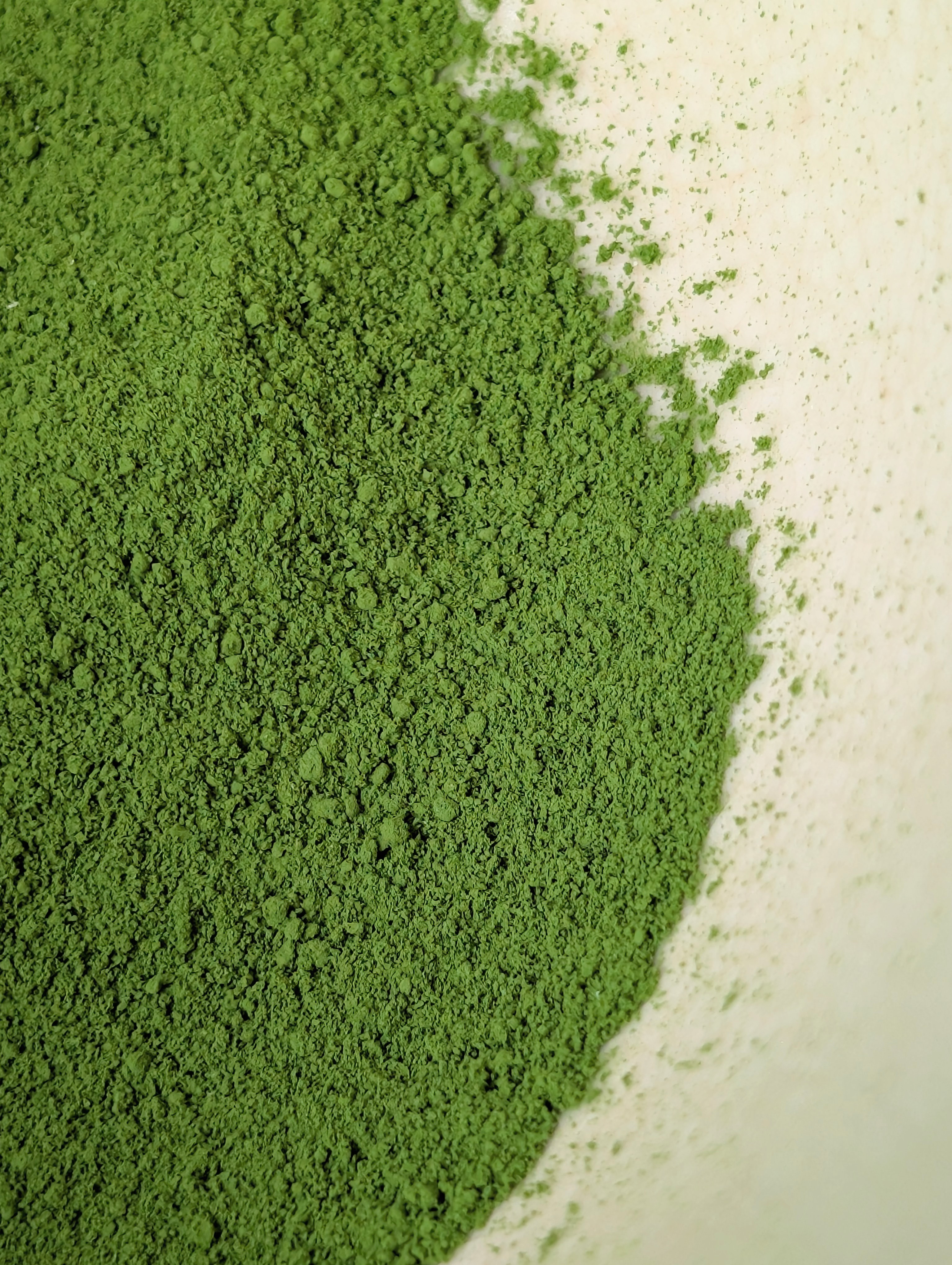
The flavour profile starts strongly vegetal with a fantastic level of umami goodness, there is creaminess but it comes alongside sharpness carrying through that greek yogurt note from both the wet and dry aromas. Other notes from the aforementioned aromas that carried through were fruit and nut dark chocolate, a hint of the pasta like starchiness, toasted chestnut marshmallows, dried goji berries & chrysanthemum. There is a bitterness present, but it is not a strong enough level to overwhelm the other notes present. If allowed to cool, even slightly, notes of oat milk are added into the mix, as well as a light citrus & slightly under ripe bananas.
After trying this matcha prepared with water at multiple temperatures, I believe that this matcha shines when it is prepared at a lower temperature, the sweet spot temperature wise for this matcha is 60C, when prepared at this temperature there is much more balance within the flavor profile, as well as the addition of much more amplified notes of oatmilk, slightly under ripe bananas, toasted chestnut marshmallows & citrus.
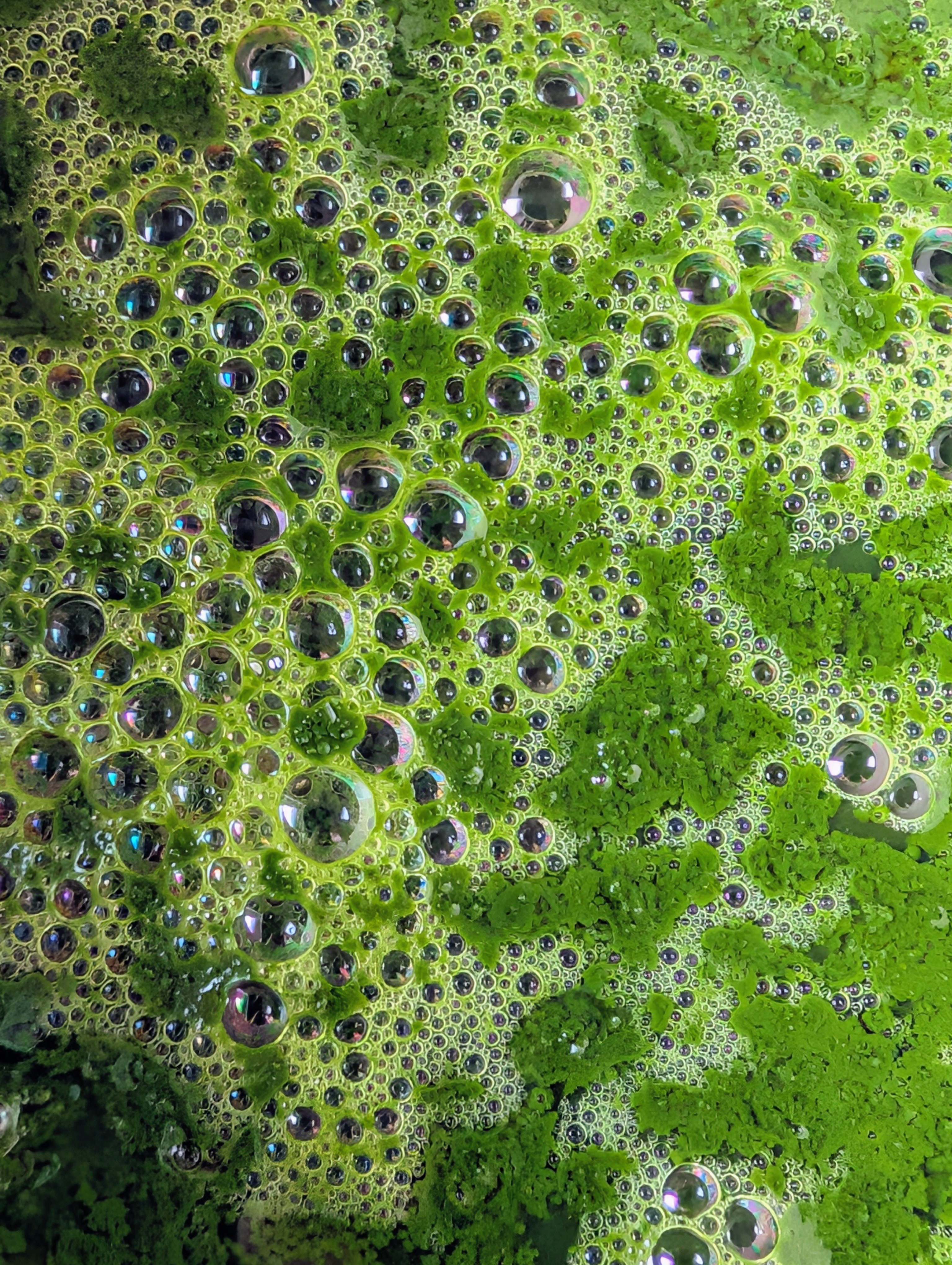
Aforementioned notes found within the flavour profile of the bowls prepared with hotter water are also present however a lot of them seem much brighter than they once did. There was less starchiness and a much more muted level of sharpness, which made the flavour profile feel much more balanced and the overall texture much more pleasant.
Texturally this matcha has a Medium mouthfeel, with a small amount of dryness, sweet minerality, sharpness & hints of creaminess when prepared with hotter water. Lower temperature water however results in a much more pleasant texture overall & while the mouthfeel is unchanged, there is no longer any dryness present, but it does retain that sweet minerality without the sharpness & has an amplified creaminess. The finish is delightfully long lasting, with lingering grassy sharp vegetal notes, sweet minerality and oat milk creaminess.
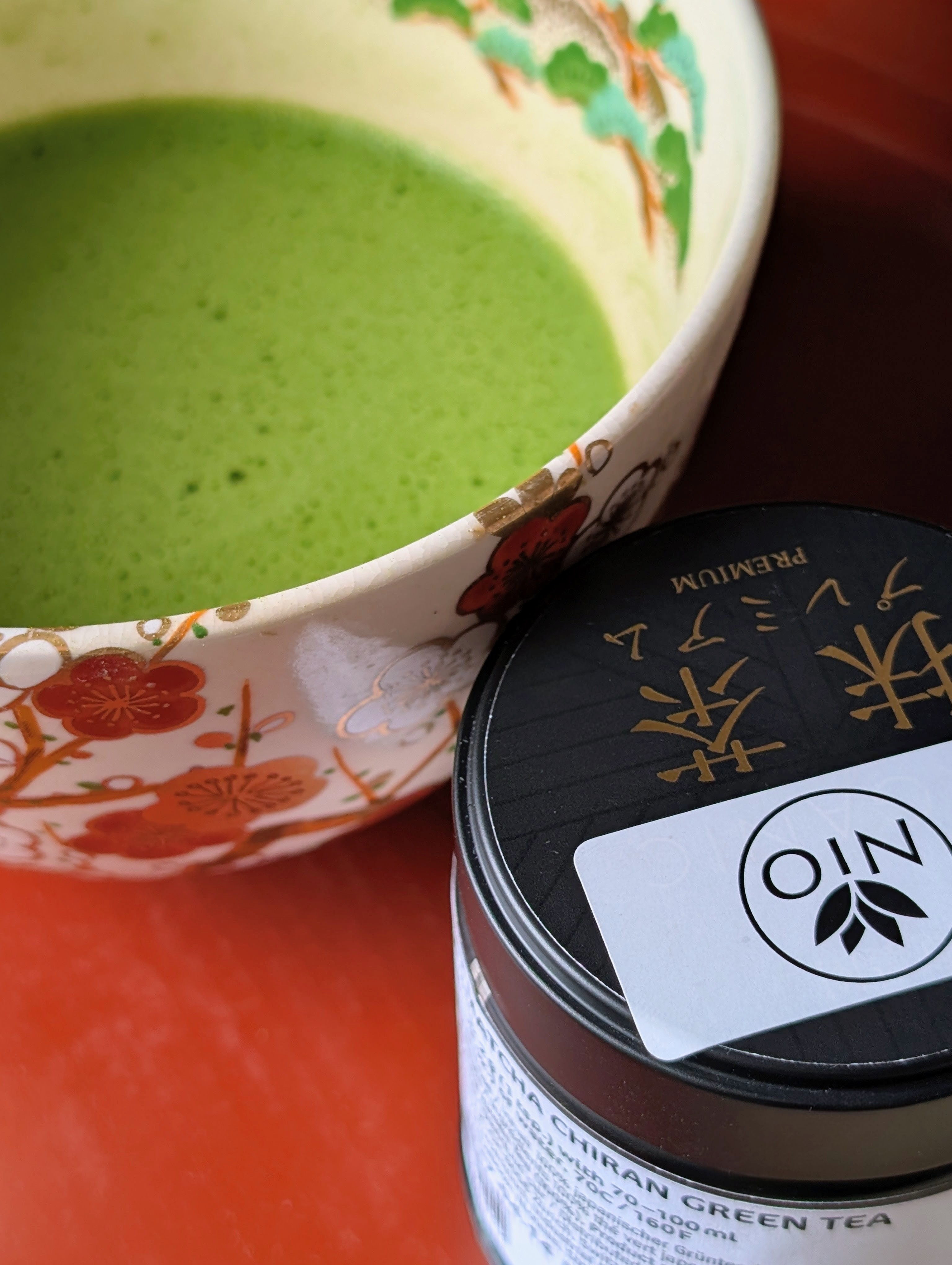
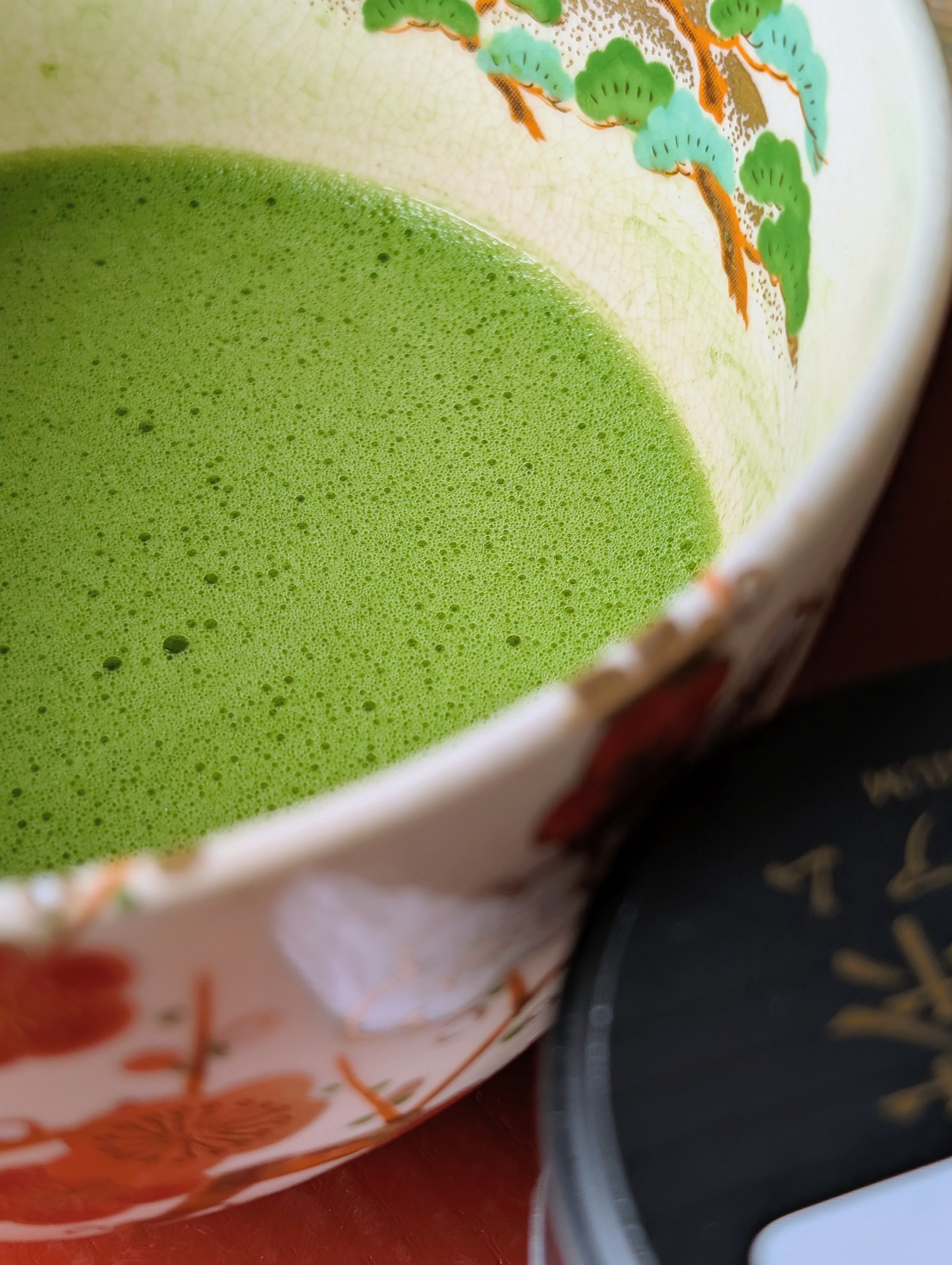

Best Prepared As: Usucha (Thin Tea) – Temperature: 60C.
I have paired this matcha with lots of different sweet treats over the last few weeks including but not limited to: strawberry & cream tart, yuzu mochi & peach flavour oreos & dried cranberries with white chocolate. While it is always nice to have a sweet treat alongside a bowl of matcha, I do find that it paired better with a specific kind of sweet treat, particularly those with any form of berry accompanied by a creamy element. So the strawberry & cream tart & the dried cranberries with white chocolate were by far the most complimentary pairing, overall.
Art Pairing: Jiyoung Park – Autumn Reflections – Oil on canvas (2025)
For this art pairing I wanted to find a piece of art, no matter the medium, that could accurately represent my favourite aspects of this matcha. Usually for these pairings I tend to pick Japanese artists to forge a link between the art and the origins of the tea, but I wanted to challenge myself by moving outside of this time around.
While I did want whatever I picked for this pairing to prominently feature green within its colour palette, I also wanted it to feature colours that would represent the notes within its flavour profile that I found to be unique compared to other matcha I have tried such as the notes of dried goji berries, chrysanthemum, slightly under ripe bananas. With those things in mind I set out to find the perfect piece, and when I came across Jiyoung Park’s painting titled Autumn Reflections, it felt like I had been handed the perfect painting on a silver platter.
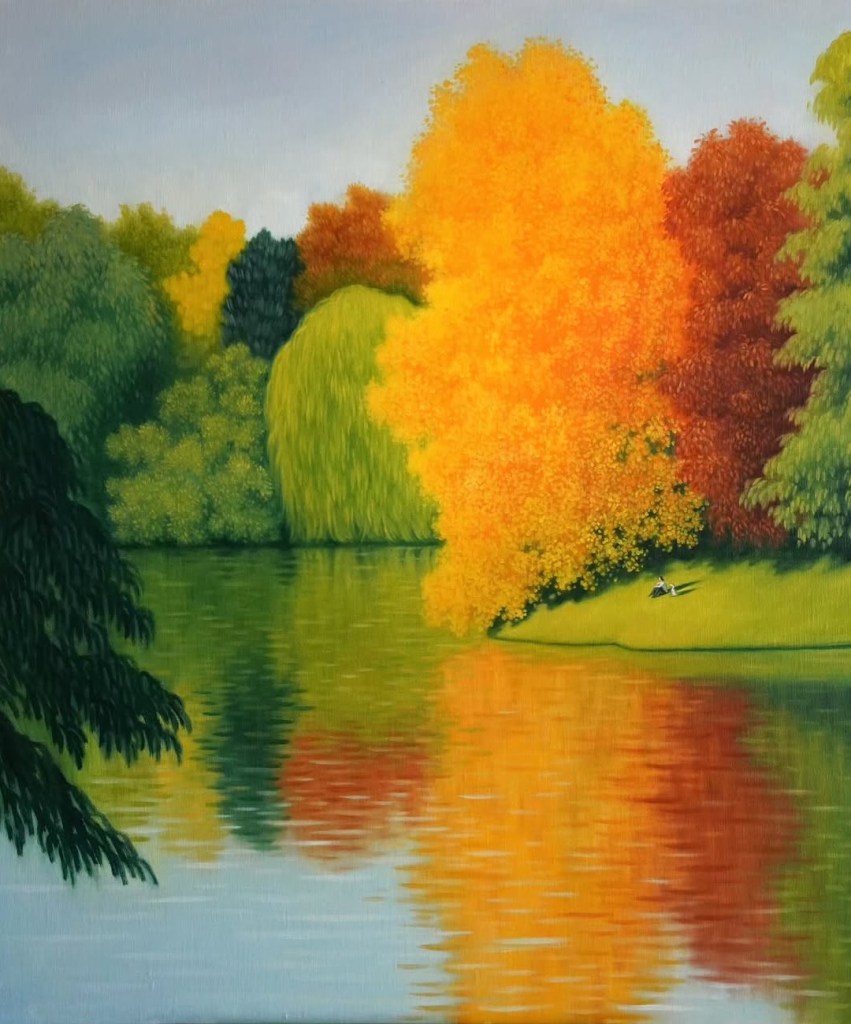
The colour palette includes everything I wanted including different shades of green, yellow and orange to represent everything single one of the unique stand out notes perfectly. While there is beautiful dreamlike softness to this painting, all of the trees having distinctive leafy textures avoids it feeling flat, which is mirrored in experience provided by the matcha and that so many aspects of the aroma, taste and texture change and transform through the session and the way in which this matcha transformed completely when prepared at different temperatures.
When I close my eyes and sip on this matcha I can imagine myself within this painting, taking time to reflect on life, using the quiet time to let go of all of the stress and tension in my body. With the aromas of early autumn blowing through the wind.
I am thrilled to have been introduced to the work of Jiyoung Park through this pairing and to have been able to have a much more modern piece of art featured in one of these pairings for once.
Should you want to give this matcha a try, you can find it here on the Nio Tea Website. Remember to use code KIMBERLEYSKYUSU15 for 15% off your Nio Teas order. (I get a small commission when you use the code)
Until next time, Happy Steeping – Kimberley
You must be logged in to post a comment.